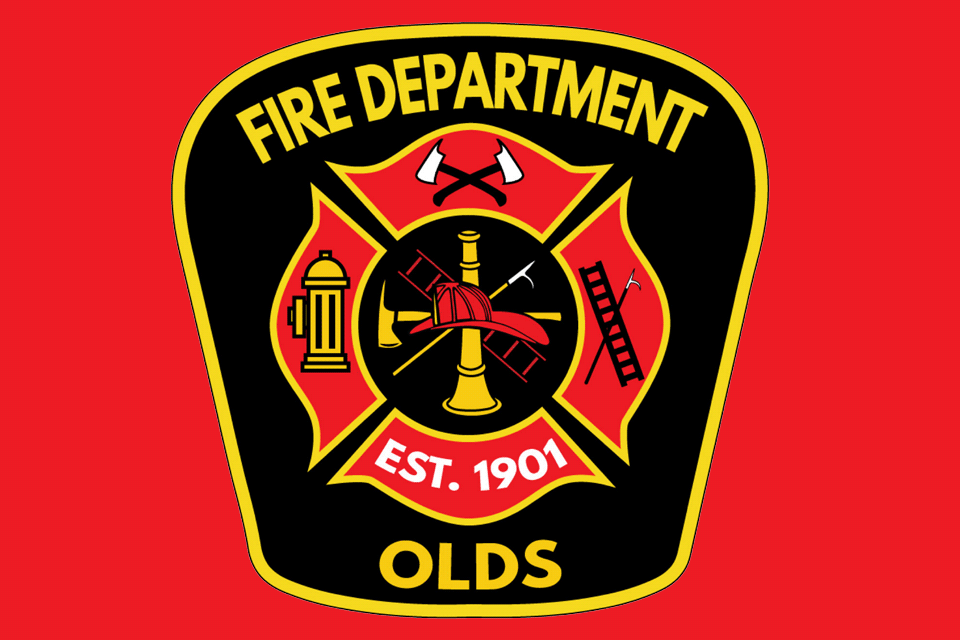OLDS — The Olds Fire Department is participating in a University of Alberta pilot study on the effectiveness of drone usage in emergency response scenarios.
Chief Justin Andrew told the Albertan the project has been in the works since early January.
“By utilizing visual and thermal video of the scene, drone technology will be able to quickly evaluate the extent and severity of an emergency, providing first responders with valuable information to help them determine the necessary equipment and personnel to be deployed,” a Town of Olds news release says.
“Traditionally, emergency responders have faced challenges in rapidly assessing the scope and nature of emergencies, especially in situations where access may be limited or hazardous.”
In the event of an emergency, the drone will be deployed and flown in a straight flight path to the incident scene.
“Equipped with advanced camera systems and real-time monitoring capabilities, the drone will provide firefighters with a bird’s-eye view of the emergency scene,” the release says.
“This aerial perspective allows responders to quickly evaluate a situation, identify potential hazards, and formulate the most effective response strategy.”
All footage captured by the drone will be used solely by the University of Alberta study and is protected from any public release or unauthorized access.
“The goal of this project is to create more efficient, effective and safer response to emergency situations in our region,” the release says.
“Aerial drones can cover a wider area in a shorter amount of time, enabling faster deployment,” says Olds Fire Department Chief and director of protective services Justin Andrew.
“Having a full understanding of an emergency situation and any visible dangers at the scene allows our team to respond safely and effectively.”
Olds residents may see or hear a drone in the community as it scouts out the situation before crews arrive.
That drone will not be recording during its flight to or from the incident location, only while it is observing the location of the incident, town officials stress.
Town officials say the drone study is an “incredible opportunity” to improve response capabilities in rural communities because this type of drone use is currently not authorized in Canada.
“There are no other entities in Canada currently working with Federal regulatory bodies to change this legislation, making this a very important pilot project,” the release says.
“If successful, this project could see changes occurring across the country in respect to drone usage during emergency responses.”
The release says Olds firefighters have received “comprehensive pilot training” to ensure they are proficient at flying the drone.
“We are thankful for the opportunity to partner with the University of Alberta on this unique pilot project to explore how we can enhance emergency management, improve response times, and enable efficient and effective deployment of equipment and personnel to an emergency,” Andrew says.
In an email, Andrew said since the project began, seven Olds Fire Department (OFD) members have been trained and certified as advanced RPAS (remote piloted air system) pilots and familiarization of the drones that will be used for the study has begun.
"We are currently in a position where we can utilize the aircraft for emergency operations. And as time progresses and we achieve milestones that are being worked on with Transport Canada to begin operational trials of currently prohibited actions, we will update through social media accordingly," Andrew wrote.
"A big part of this study is pushing the current boundaries of operation within Canada to demonstrate safe operation, adherence to regulations and standards and familiarization with equipment and protocols.
"Drone operation is highly technical and when you are introducing the use of these devices into airspace that is shared with piloted aircraft, there are many safety standards and procedures that must be met. We are working with industry professionals to design and implement these procedures and ensure that this can be done safely, and demonstrate a positive impact on emergency response in doing so.
We anticipate this study will continue for the remainder of 2024 and likely into 2025. There is potential for it to be extended, based on findings and new developments."



